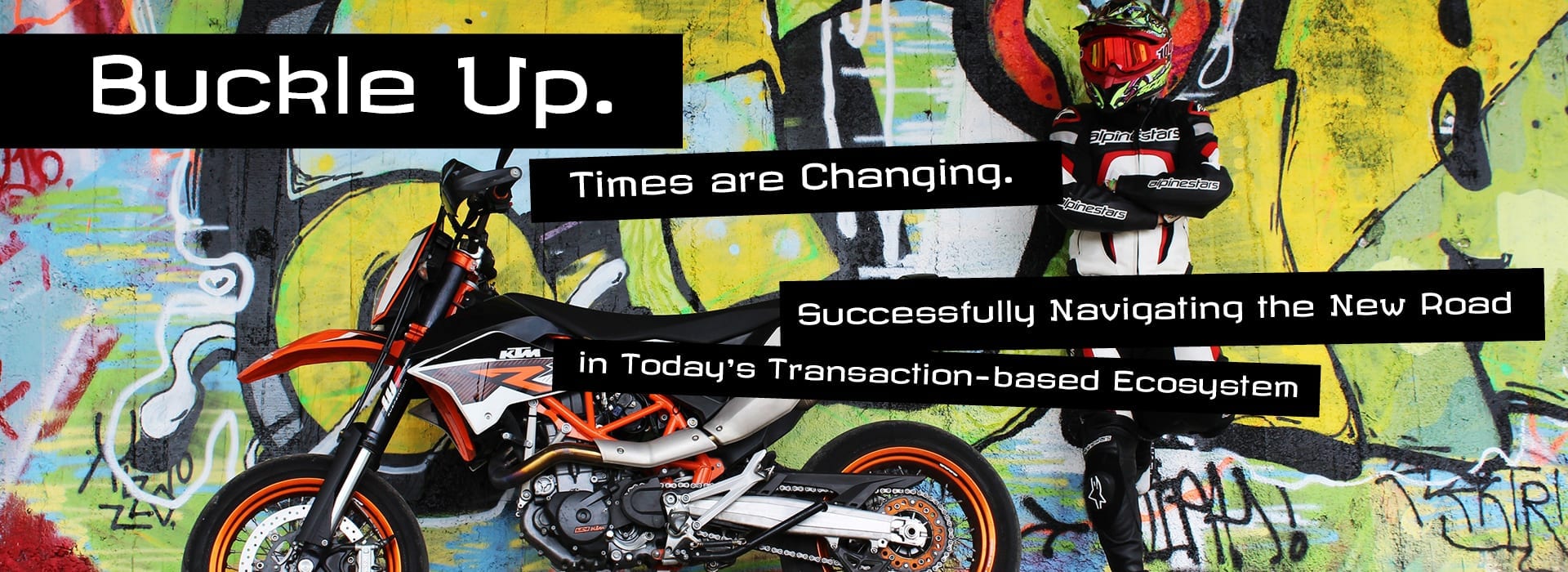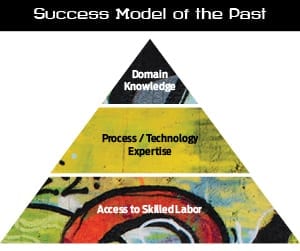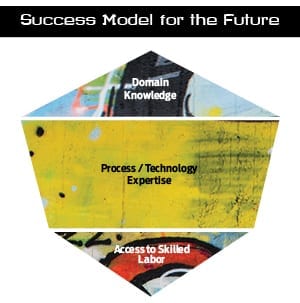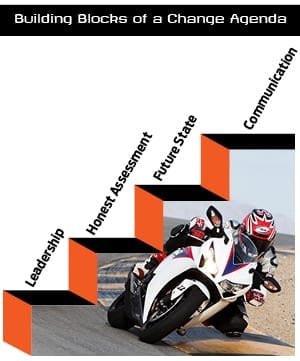
Like the Bob Dylan song, “The Times They Are a-Changin’.” Think back to a couple of decades ago when it was easy to describe outsourcing in simple terms: Have a service provider handle your typically non-core processes in exchange for lower costs and somewhat improved results. In fact, we had some folksy terms to describe that: “mess for less,” and “lift and shift.”
Then we added a small wrinkle to pricing and asked providers to bill based on processed transactions rather than a set of savings against the baseline. Again, we had a nice term for that too: “buy by the drink.” Businesses, customers and providers alike were happy with the results and the outsourcing profession grew.
Next came the concern of just providing steady-state service. Customers began asking for improved performance at a lower cost and sought innovation that would make a difference to their top line, not just cost savings. Throw in that service providers needed to improve their delivery methods to increase their profits and shareholder value and you had a real catalyst for change. Automation and re-engineering became the weapons of choice and we saw incremental improvement in the environment and a gradual change in the outsourcing profession.
Now we have a sea of change coming to technology and the business environment. New concepts in process automation, data analytics and cloud-based software services are redefining how customers demand services. This digital transformation has altered how businesses provide their products and services to their clients. We have, what I call, a “transaction-based ecosystem” for businesses.
In this environment, processes look much different than they have in the past. No longer can one take a sub process and outsource it without directly impacting this ecosystem. The Internet of Things (or in this context the Internet of Business) has changed expectations for customers – consumers and businesses alike.
For example, this digital transformation has dramatically reduced the needs for call center and customer service process handlers. If this seems hard to believe just look on a business website for a phone number to call for service, you need detective skills to find it! We have seen news about businesses bringing outsourced work back in-house, altering their contracts to accommodate the new environment. And new, more agile service providers are making noise in cognitive automation.
Combine this digital transformation with the newer technology of blockchain and cloud computing, and service delivery platforms of outsourcing providers will be changing dramatically.
Think back to a couple of decades ago when it was easy to describe outsourcing in simple terms: Have a service provider handle your typically non-core processes in exchange for lower costs and somewhat improved results.
Now we have a sea of change coming to technology and the business environment ... We have, what I call, a “transaction-based ecosystem” for businesses.
Success Model of the Past
Just a short time ago, I described a simple model for an ideal service provider profile, as shown in figure 1 where access to skilled labor was the most important element. Process and technology expertise were important but not a basis for delivery. Domain knowledge created a differentiation in the marketplace. This model gave rise to many offshore companies starting with the Y2K challenge. BPO service providers also built their business around this model by recruiting and providing skilled labor in such areas as insurance back-office operations and customer service.


Success Model for the Future
Now, this model has to change dramatically. Process and technology expertise has become extremely critical while access to skilled labor not so much. The simple triangle-based model now shifts to a diamond shape model with greater emphasis on the middle block. Skilled labor is necessary primarily to implement and maintain the new technology platform.
This is a radical change agenda for most companies, especially for service providers who have built a business based on the previous model. How do they change their business while still maintaining current business? I liken it to trying to change a tire while the car is moving. To successfully do it, businesses will have to create a change agenda and a way of thinking that allows them to envision the future state. And it is a critical step in the process.
Building Blocks of a Change Agenda
Block #1 – Leadership
Like any change management program, there needs to be a champion who will envision the future, define steps to get there and provide leadership to the organization. This champion needs credibility and so must be at a high level in the organization. Often this champion is recruited so that their thinking is not founded on what success has looked like in the past. Some organizations have set up a separate entity to define and begin building for the future. It is this outpost that creates the new business eventually replacing the current model. Industries have great examples in Apple and Steve Jobs, Amazon and Jeff Bezos who defined the future state for their companies and became champions.
Block #2 – Honest assessment
Before starting on any journey, you have to know where you are! It is essential to know the value of your current state – customers, products and skill sets so that there is a clear understanding of the degree of change needed. You cannot pick a future state that is dramatically different from your current state capabilities without totally decimating an ongoing business. The technology world is full of skeletons of companies that tried to be totally different from what they were! Unfortunately, we have seen companies like HP (EDS) and Nokia suffer from a lack of understanding of their current state capabilities.
Block #3 – Future state
In a recent survey presented by CNBC, 67 percent of CEOs indicated that they do not have a solid vision of how to avoid disruption to their business. Businesses need to understand the changing world around them, assess what will create disruption to their current business model, and then assess their ability to pivot towards it. Once defined, it is important to establish a point in the future when the new business model will replace the current model and make it a cornerstone for their change agenda. We are seeing this in several industries, such as automotive, where the major players have already defined their future state to include fossil-fueled automobiles.
There are some simple questions that can help define what the future state may look like:
- LOOK – What new way can we adopt a disrupting technology in our fundamental business?
- VALUE – How can we generate value and minimize cannibalization of our current business?
- CAPABILITIES – Do we have or can we get skills and capabilities to move to the future state?
- INVESTMENT – Can we invest in the change while still maintaining current business? Or, can we slightly alter our current business to generate the necessary investment?
Block #4 – Communication
This change journey is not a sprint but a marathon. It requires that as the new model begins to take shape, it is communicated throughout the organization. It is important that everyone in the organization, although focused on the current model, can see where the change is going to occur and begin their own change process. Many of the technological advances will require learning new skills and investing in new capabilities. It is often this change process that becomes the stumbling block to achieving success.


The Journey |
This change journey is not a sprint but a marathon. |
Summary
Disruption is on the horizon. Technology as well as social dimensions will alter what services will be needed and how it will be delivered. We have seen many call center services jobs disappear as more companies use web-based communication with their customers. That is only a beginning. Outsourcing service providers need to make sure that they are well prepared and ready to change their business model.
“Your old road is rapidly aging. Please get out of the new one if you can’t lend your hand …The order is rapidly fading. And the first one now will later be last. Cause the times they are a- changin’.”

About the Author: Jag Dalal is IAOP’s Chief Advisor Thought Leadership. A Certified Outsourcing Professional and instructor, Dalal was inducted into the IAOP Leadership Hall of Fame. He is a globally known speaker and advisor to service providers, leading them to the future.

